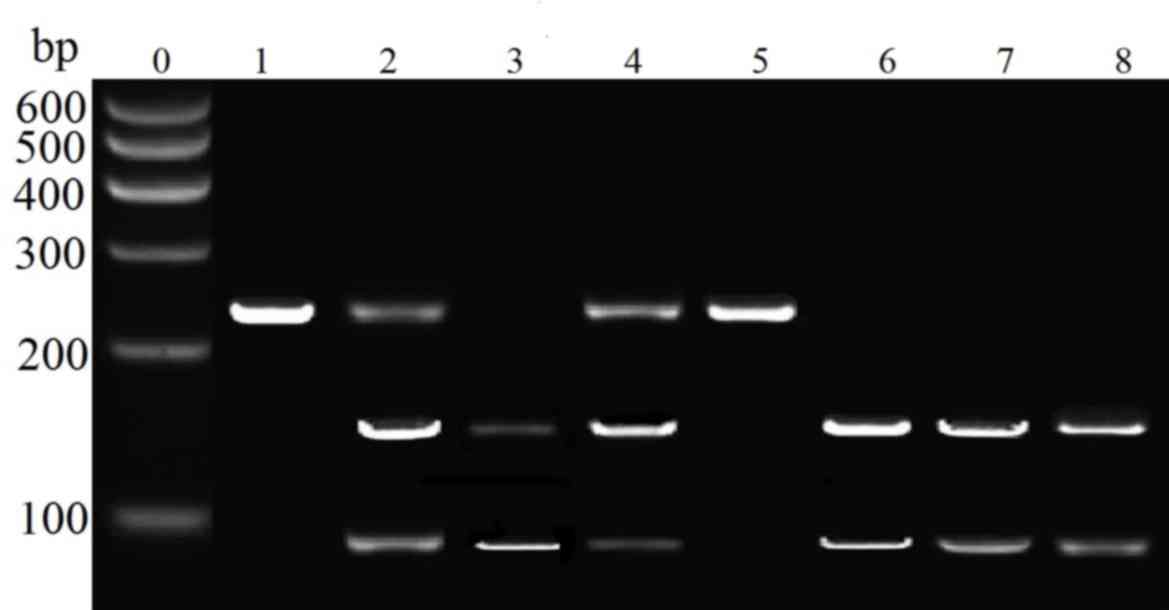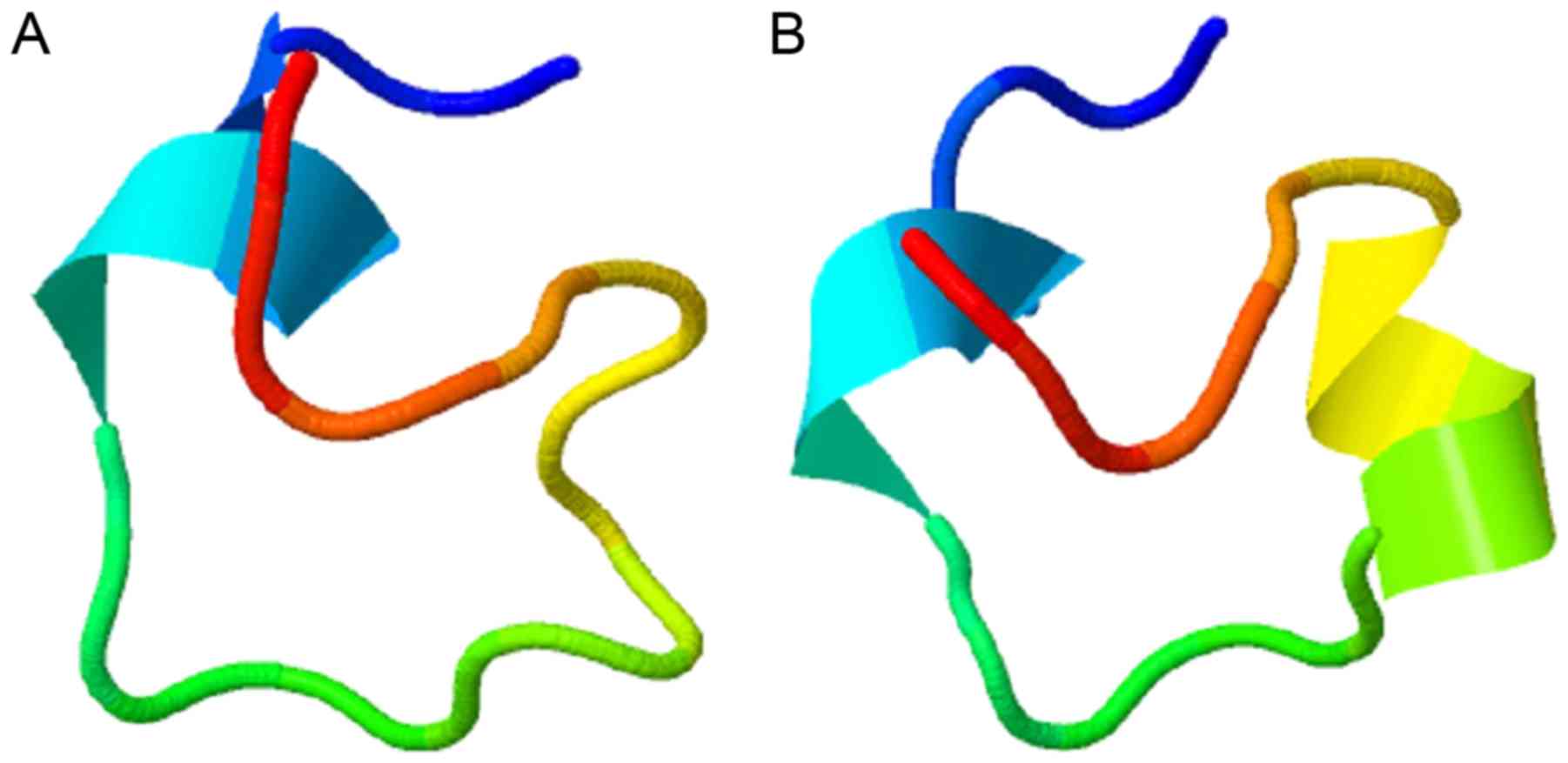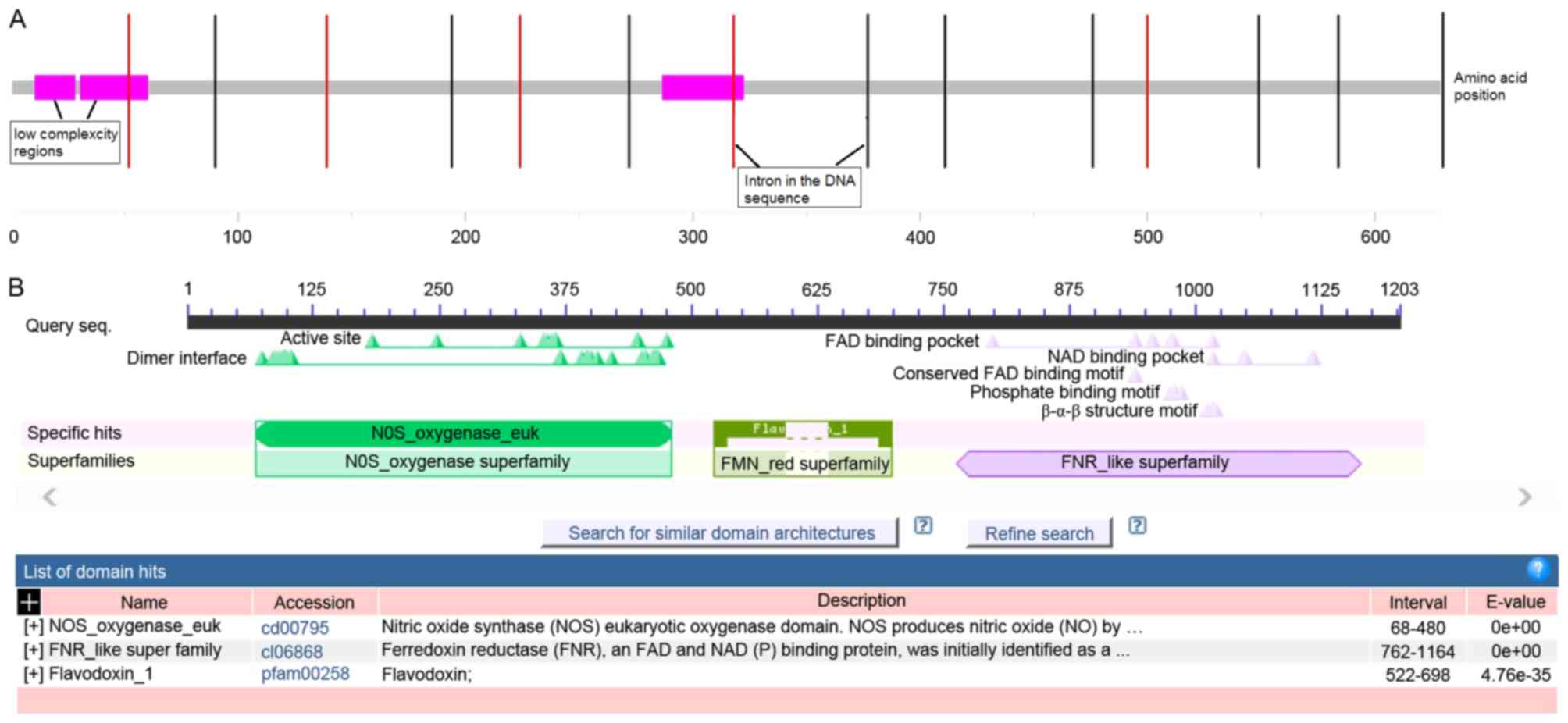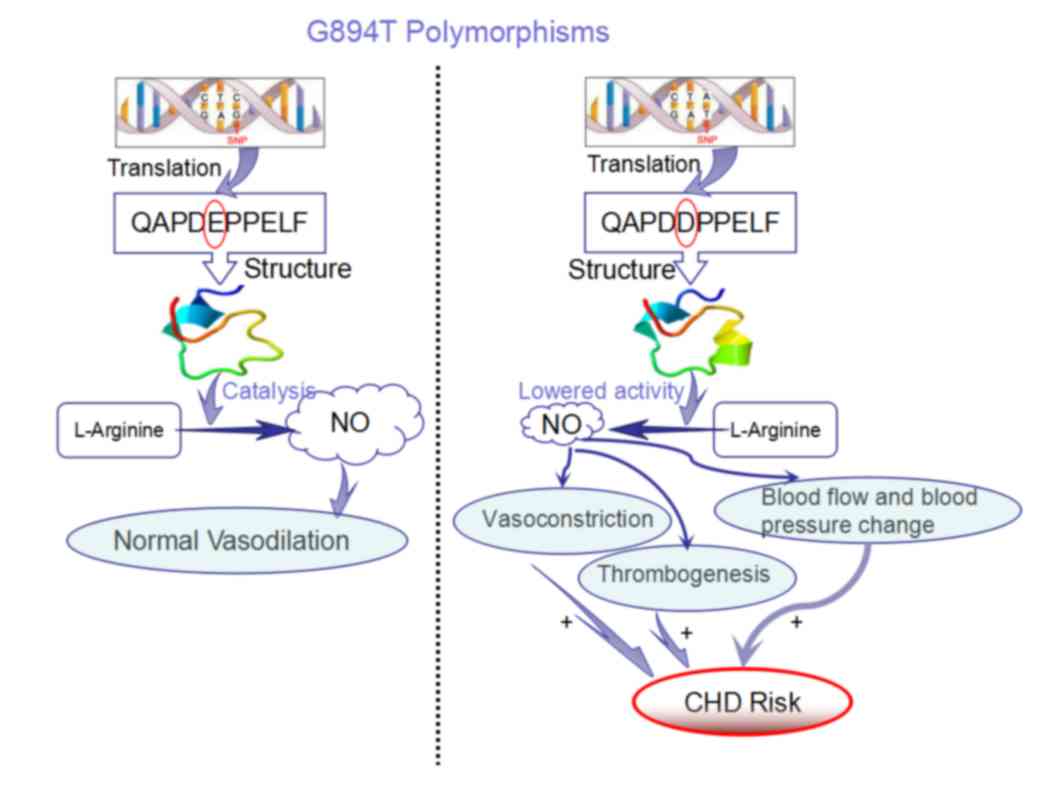|
1
|
Lv H and Guo Y: Progress in the treatment
of coronary heart disease. Jin Ri Jian Kang. 15:1492016.(In
Chinese).
|
|
2
|
Batty GD, Shipley M, Smith GD and Kivimaki
M: Long term risk factors for coronary heart disease and stroke:
Influence of duration of follow-up over four decades of mortality
surveillance. Eur J Prev Cardiol. 22:1139–1145. 2015. View Article : Google Scholar : PubMed/NCBI
|
|
3
|
Che J, Li G, Shao Y, Niu H and Shi Y: An
analysis of the risk factors for premature coronary artery disease
in young and middle-age Chinese patients with hypertension. Exp
Clin Cardiol. 18:89–92. 2013.PubMed/NCBI
|
|
4
|
Yao HM, Sun TW, Wan YD, Zhang XJ, Fu X,
Shen DL, Zhang JY and Li L: Domestic versus imported drug-eluting
stents for the treatment of patients with acute coronary syndrome.
World J Emerg Med. 5:175–181. 2014. View Article : Google Scholar : PubMed/NCBI
|
|
5
|
Tolstrup JS, Hvidtfeldt UA, Flachs EM,
Spiegelman D, Heitmann BL, Bälter K, Goldbourt U, Hallmans G, Knekt
P, Liu S, et al: Smoking and risk of coronary heart disease in
younger, middle-aged, and older adults. Am J Public Health.
104:96–102. 2014. View Article : Google Scholar : PubMed/NCBI
|
|
6
|
Ben AM, Messaoudi S, Ezzine H and Mahjoub
T: Contribution of eNOS variants to the genetic susceptibility of
coronary artery disease in a Tunisian population. Genet Test Mol
Biomarkers. 19:203–208. 2015. View Article : Google Scholar : PubMed/NCBI
|
|
7
|
Han Xu WG: Research progress in
pathogenesis of coronary heart disease and its correlation with
endothelin and nitric oxide. China Medical Herald. 1–169. 2014.
|
|
8
|
Rochette L, Lorin J, Zeller M, Guilland
JC, Lorgis L, Cottin Y and Vergely C: Nitric oxide synthase
inhibition and oxidative stress in cardiovascular diseases:
possible therapeutic targets? Pharmacol Ther. 140:239–257. 2013.
View Article : Google Scholar : PubMed/NCBI
|
|
9
|
Shu X, Keller TT IV, Begandt D, Butcher
JT, Biwer L, Keller AS, Columbus L and Isakson BE: Endothelial
nitric oxide synthase in the microcirculation. Cell Mol Life Sci.
72:4561–4575. 2015. View Article : Google Scholar : PubMed/NCBI
|
|
10
|
Levinsson A, Olin AC, Bjorck L, Rosengren
A and Nyberg F: Nitric oxide synthase (NOS) single nucleotide
polymorphisms are associated with coronary heart disease and
hypertension in the INTERGENE study. Nitric Oxide. 39:1–7. 2014.
View Article : Google Scholar : PubMed/NCBI
|
|
11
|
Chang FJ, Yuan HY, Hu XX, Ou ZJ, Fu L, Lin
ZB, Wang ZP, Wang SM, Zhou L, Xu YQ, et al: High density
lipoprotein from patients with valvular heart disease uncouples
endothelial nitric oxide synthase. J Mol Cell Cardiol. 74:209–219.
2014. View Article : Google Scholar : PubMed/NCBI
|
|
12
|
Na Z and Jin-Fei Hu: A case-control study
on the association between single nucleotide polymorphism of eNOS
gene T-786C and G894T and the risk of coronary heart disease.
Zhejiang J Prevent Med. 28:9–12. 2016.
|
|
13
|
Azzam N, Zafrir B, Fares F, Smith Y,
Salman N, Nevzorov R and Amir O: Endothelial nitric oxide synthase
polymorphism and prognosis in systolic heart failure patients.
Nitric Oxide. 47:91–96. 2015. View Article : Google Scholar : PubMed/NCBI
|
|
14
|
Vecoli C: Endothelial nitric oxide
synthase gene polymorphisms in cardiovascular disease. Vitam Horm.
96:387–406. 2014. View Article : Google Scholar : PubMed/NCBI
|
|
15
|
Zhang K, Bai P, Shi S, Zhou B, Wang Y,
Song Y, Rao L and Zhang L: The G894T polymorphism on endothelial
nitric oxide synthase gene is associated with increased coronary
heart disease among Asia population: Evidence from a Meta analysis.
Thromb Res. 130:192–197. 2012. View Article : Google Scholar : PubMed/NCBI
|
|
16
|
Dawber TR, Moore FE and Mann GV: II.
coronary heart disease in the framingham study. Int J Epidemiol.
44:1767–1780. 2015. View Article : Google Scholar : PubMed/NCBI
|
|
17
|
Xu D and Zhang Y: Ab initio protein
structure assembly using continuous structure fragments and
optimized knowledge-based force field. Proteins. 80:1715–1735.
2012.PubMed/NCBI
|
|
18
|
Letunic I, Doerks T and Bork P: SMART:
Recent updates, new developments and status in 2015. Nucleic Acids
Res. 43(Database Issue): D257–D260. 2015. View Article : Google Scholar : PubMed/NCBI
|
|
19
|
Marchler-Bauer A, Bo Y, Han L, He J,
Lanczycki CJ, Lu S, Chitsaz F, Derbyshire MK, Geer RC, Gonzales NR,
et al: CDD/SPARCLE: Functional classification of proteins via
subfamily domain architectures. Nucleic Acids Res. 45:D200–D203.
2017. View Article : Google Scholar : PubMed/NCBI
|
|
20
|
Kanehisa M, Furumichi M, Tanabe M, Sato Y
and Morishima K: KEGG: New perspectives on genomes, pathways,
diseases and drugs. Nucleic Acids Res. 45:D353–D361. 2017.
View Article : Google Scholar : PubMed/NCBI
|
|
21
|
Coletta A, Pinney JW, Solis DY, Marsh J,
Pettifer SR and Attwood TK: Low-complexity regions within protein
sequences have position-dependent roles. BMC Syst Biol. 4:432010.
View Article : Google Scholar : PubMed/NCBI
|
|
22
|
Yang Y, Du K, Liu Z and Lu X: Endothelial
nitric oxide synthase (eNOS) 4b/a gene polymorphisms and coronary
artery disease: Evidence from a meta-analysis. Int J Mol Sci.
15:7987–8003. 2014. View Article : Google Scholar : PubMed/NCBI
|
|
23
|
Loukanov T, Hoss K, Tonchev P, Klimpel H,
Arnold R, Sebening C, Karck M and Gorenflo M: Endothelial nitric
oxide synthase gene polymorphism (Glu298Asp) and acute pulmonary
hypertension post cardiopulmonary bypass in children with
congenital cardiac diseases. Cardiol Young. 21:161–169. 2011.
View Article : Google Scholar : PubMed/NCBI
|
|
24
|
Yousry SM and Sedky Y: Relation of
Endothelial Nitric Oxide Synthase (eNOS) Genetic polymorphisms and
pulmonary hypertension in egyptian children with congenital heart
disease Sherif Mohamed. J Am Sci. 10:124–130. 2014.
|
|
25
|
Wang D, Li W, Cui X, Meng Y, Zhou M, Xiao
L, Ma J, Yi G and Chen W: Sleep duration and risk of coronary heart
disease: A systematic review and meta-analysis of prospective
cohort studies. Int J Cardiol. 219:231–239. 2016. View Article : Google Scholar : PubMed/NCBI
|
|
26
|
Yang WX, Yang Z, Wu YJ, Qiao SB, Yang YJ
and Chen JL: Factors associated with coronary artery disease in
young population (age ≤40): Analysis with 217 cases. Chin Med Sci
J. 29:38–42. 2014. View Article : Google Scholar : PubMed/NCBI
|
|
27
|
Seckin S, Emrah B, Biyik I, Emre A, Burak
T, Azmi S, Omer C and Sinan D: 786T/c endothelial nitric oxide
synthase gene polymorphism and coronary collateral circulation.
Postepy Hig Med Dosw (Online). 70:80–85. 2016. View Article : Google Scholar : PubMed/NCBI
|
|
28
|
Xin W: A study on the association between
intracranial atherosclerosis and carbonyldiamide and the
polymorphism of genes related to nitric oxide synthetic pathway.
Southern Medical University. 12:37–40. 2013.
|
|
29
|
Xueping J: Study of eNOS Gene G894T
polymorphism in CHD patients of multi-ethnic group of xingjiang.
Chin J Health Lab Technol. 1–1461. 2010.
|
|
30
|
Chen C and Jiang X: Study on polymorphism
of eNOS gene G894T in Kazak patients with CHD in Xinjiang. J Clin
Exp Med. 9:451–499. 2010.
|
|
31
|
Colombo MG, Andreassi MG, Paradossi U,
Botto N, Manfredi S, Masetti S, Rossi G, Clerico A and Biagini A:
Evidence for association of a common variant of the endothelial
nitric oxide synthase gene (Glu298→Asp polymorphism) to the
presence, extent, and severity of coronary artery disease. Heart.
87:525–528. 2002. View Article : Google Scholar : PubMed/NCBI
|
|
32
|
Rossi GP, Cesari M, Zanchetta M, Colonna
S, Maiolino G, Pedon L, Cavallin M, Maiolino P and Pessina AC: The
T-786C endothelial nitric oxide synthase genotype is a novel risk
factor for coronary artery disease in Caucasian patients of the
GENICA study. J Am Coll Cardiol. 41:930–937. 2003. View Article : Google Scholar : PubMed/NCBI
|
|
33
|
He Y, Yang D and Yu H: Research on
Correlativity of 27 bpVNTR and G894T polymorphisms of endothelial
nitric oxide synthase gene and coronary heart disease in henan han
population. China J Modern Med. 1–527. 2008.
|
|
34
|
Liang Q, Dong Y and Yang X: The research
of AC angiotensinogen and endothelial nitric oxide synthase gene
polymorphisms in predisposition to CHD with gene chip technology.
Hebei Med. 1–406. 2006.
|
|
35
|
Faure C, Leveille P, Dupont C, Julia C,
Chavatte-Palmer P; Alifert Group, ; Sutton A and Levy R: Are
superoxide dismutase 2 and nitric oxide synthase polymorphisms
associated with idiopathic infertility? Antioxid Redox Signal.
21:565–569. 2014. View Article : Google Scholar : PubMed/NCBI
|
|
36
|
Kumar GR, Spurthi KM, Kumar GK, Aiyengar
TM, Chiranjeevi P, Nivas S, Anuradha C, Swathi B, Sahu SK, Ali A
and Rani HS: Genetic polymorphisms of eNOS (−786T/C, Intron 4b/4a
& 894G/T) and its association with asymptomatic first degree
relatives of coronary heart disease patients. Nitric Oxide.
60:40–49. 2016. View Article : Google Scholar : PubMed/NCBI
|
|
37
|
Liu D, Jiang Z, Dai L, Zhang X, Yan C and
Han Y: Association between the-786T>C 1polymorphism in the
promoter region of endothelial nitric oxide synthase (eNOS) and
risk of coronary artery disease: A systematic review and
meta-analysis. Gene. 545:175–183. 2014. View Article : Google Scholar : PubMed/NCBI
|














